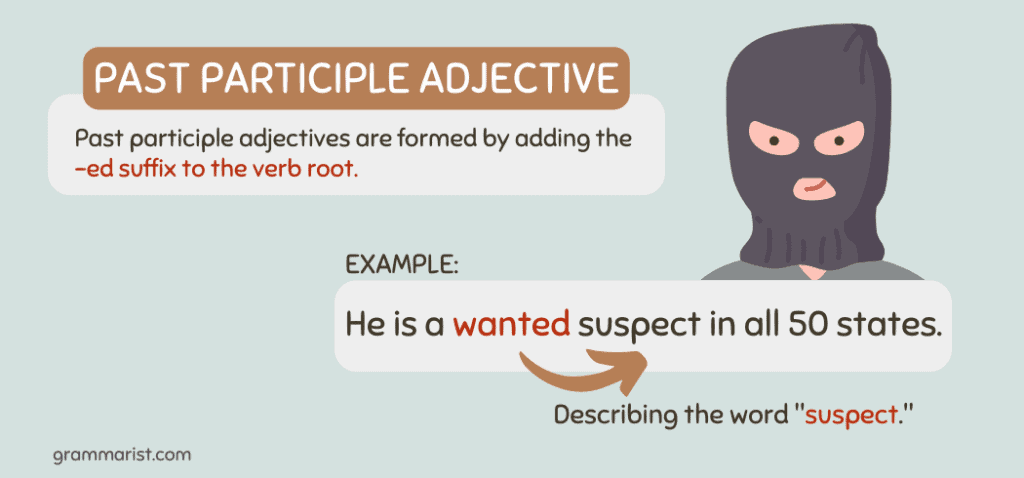When taking time to learn a new language, it’s important to understand all the different parts of speech. This is especially so for English; as I know, it’s one of the hardest languages to learn. One thing that can be confusing is how to turn verbs into adjectives. But how do you use a past participle as an adjective? This post will review the various uses and examples of past participle adjectives.
What Is a Past Participle Adjective?

Past participle adjectives are formed by adding the -ed suffix to the verb root. For example, the word “destroyed” is formed by taking the root “destroy” and adding “-ed.” They can be used to describe the characteristics of a noun.
Do Adjectives Have Past Participles?
In English sentences, a past participle encompasses a verb form that usually ends in -ed. Because of how it’s formed, it can also serve as an adjective, aside from being commonly used to make passive and perfect tenses.
How Do You Differentiate Between Past Participle and Adjective?
The best way to differentiate between a past participle and an adjective is to know their definitions as they work in a normal sentence:
- Participles are words formed using a verb.
- Adjectives are accompanied by a noun whose primary role is to describe a characteristic.
How Do You Use Past Participle Adjectives in English?
To use past participle adjectives correctly in English, it is first important to understand their meaning and purpose and also what type of sentence requires it. Adjectives formed from the past participle of a verb can describe a noun or an entire phrase, conveying information about how something happened or when something took place.
For example, the adjective “decanted” could describe a wine carefully poured into a new vessel, or the adjective “mangled” could describe something broken or torn apart.
Examples of Past Participles as Adjectives
Let’s see how past participles adjectives look in a sentence:
- As a child, John was a spoiled kid.
- Boiled water is required if you want to unclog your drains.
- Can I have those colored crayons?
- All her buried feelings started to surface.
- He is a wanted suspect in all 50 states.
Hyphenated Past Participle Adjectives
Sometimes, an adjective isn’t enough to describe a noun. You might want to combine an adjective with a past participle. Doing so requires using a hyphen. These words combine the past participle form of a verb with other parts of speech to create more complex descriptions.
Let’s exemplify:
- I like doing things the old-fashioned way.
- His essays are filled with well-rounded ideas.
- Don’t be such a narrow-minded person.
Past Participles Often Used as Adjectives
Here are some past participles used as adjectives that are commonly used when speaking or writing in English.
- To shatter – shattered
- To boil – boiled
- To scare – scared
- To confuse – confused
- To burn – burnt
- To destroy – destroyed
- To relax – relaxed
- To bore – bored
The Bottom Line
Remember you can use a past participle adjective before the noun it describes or after a linking or a stative verb. Adding hyphens between a past participle adjective and another adjective makes the entire expression act as an adjective.
